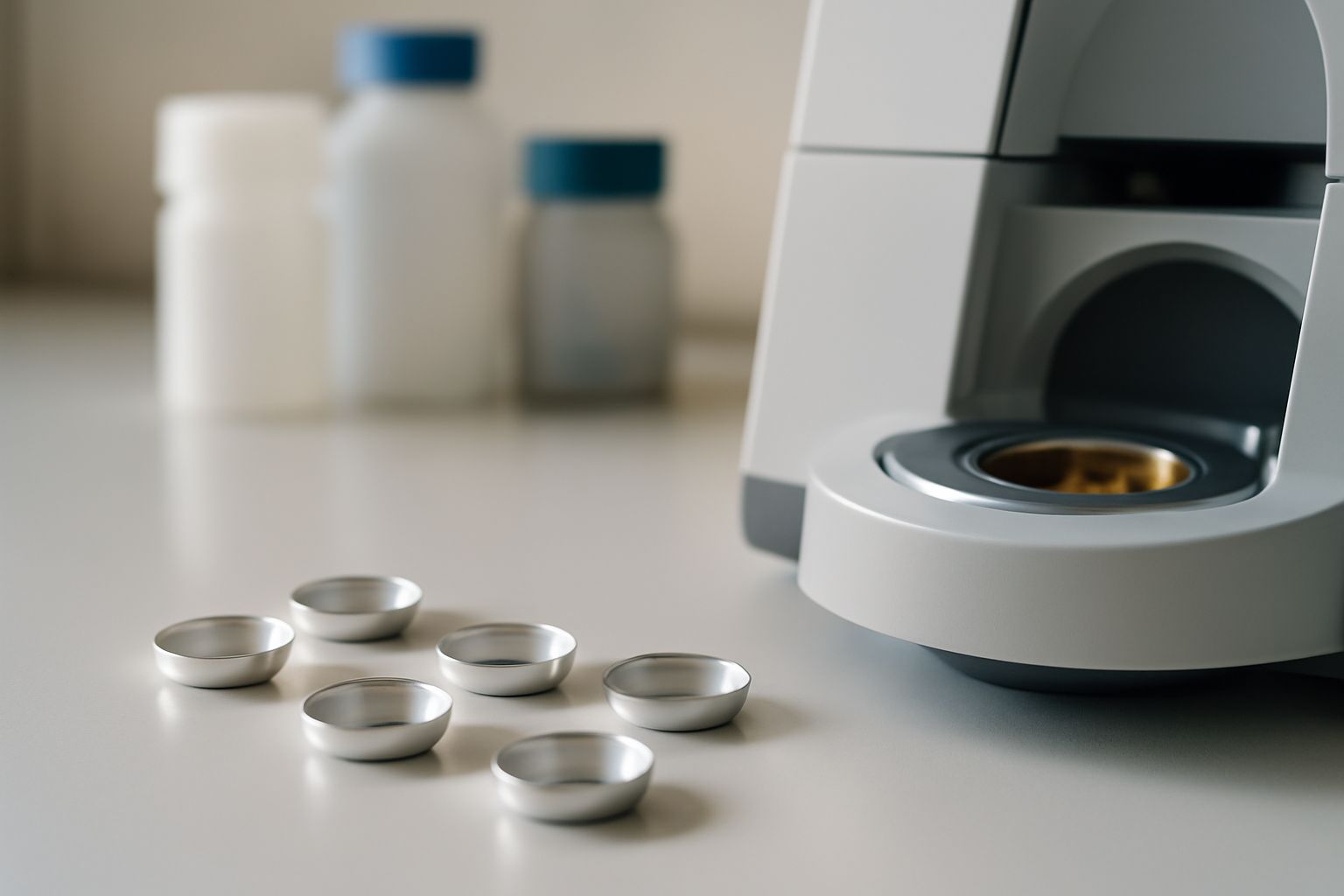Your cart is empty.
shop now
Your cart is empty.
shop now
Labs using low-grade DSC pans often face baseline shifts and uneven results in polymer analysis. This affects their ability to measure melting, crystallization, or glass transitions with confidence.
High-purity aluminum pans are essential for accurate polymer DSC analysis. Their inertness and high thermal conductivity reduce thermal noise, control baseline drift, and deliver reliable transition data across various polymers.

I have worked with many polymer labs where the right pan choice has made the difference between strong publishable results and flawed data. Below, I break down why high-purity aluminum pans matter, their benefits, and how to choose the best pan for your setup.
Ordinary aluminum or non-specific pans often introduce unwanted reactions or heat gradients in DSC tests. This causes peak broadening or inaccurate transition points in polymer analysis.
High-purity aluminum pans, made from >99.99% pure material, prevent chemical interactions and offer uniform thermal paths. This leads to more precise measurement of heat flow and transition events in DSC.
| Pan Type | Material Purity | Main Issue Avoided | Key Result in DSC | Reference |
|---|---|---|---|---|
| Standard Aluminum | 90-98% | Impurity reactions | Baseline instability | ScienceDirect |
| High-purity Aluminum | 99.99%+ | Alloying effects, oxide formation | Stable heat flow, sharp peaks | Nature |
I always confirm pan material purity with my supplier and check for independent QC certification. The difference is clear when analyzing complex or multi-phase polymer blends that require sharp resolution.
Low-grade pans can add noise, distort heat flow, and compromise polymer transition analysis. These issues lead to wrong glass transition values and doubt in research conclusions.
High-purity aluminum pans improve DSC outcomes by providing even heat transfer, low interaction with polymers, and supporting high reproducibility across test runs.
| Performance Area | Low-Grade Pan | High-Purity Aluminum Pan | Supporting Evidence |
|---|---|---|---|
| Baseline noise | Moderate/high | Low, clean | Lab case study |
| Peak resolution | Broad, fuzzy | Sharp, narrow | Polymer Journal |
| Data reproducibility | Poor with repeated use | Excellent, low drift | Nature |
| Polymer compatibility | May react with additives | Inert to most samples | ScienceDirect |
I keep a reference log of transition values for standard polymers and compare my results with literature whenever using a new pan batch. With high-purity aluminum pans, deviations are nearly always minimized.
Poor pan choice can mask weak transitions, make it hard to separate overlapping peaks, or even lead to missed melting or crystallization events in polymers.
High-purity aluminum pans present uniform contact with the DSC sensor, reduce heat lag, and protect delicate polymer samples from catalytic errors, resulting in clearer thermograms and more useful kinetic data.
| Enhancement Aspect | Effect of High-Purity Aluminum | Polymer Impact | Further Reading |
|---|---|---|---|
| Sensor contact | Uniform, low-resistance | Sharper glass transition | ScienceDirect |
| Thermal lag | Minimized | Proper peak position | Instrument manual |
| Catalytic activity | Very low with 99.99% | Stable baseline | Materials Today |
| Multiphasic blends | No cross-reactivity | Peaks easily separated | DSC Wiki |
For polymer systems with additives or multi-component blends, I find that using only high-purity pans makes a quantifiable improvement in DSC analysis and confidence in results.
Many labs struggle to choose the correct pan size, style, or quality for their DSC hardware and polymer system. This often leads to repeat orders or inconsistent test series.
Look for pans that match your instrument model, offer clear QC certification, and fit typical polymer sample sizes. Consider lid options (standard, hermetic, crimped) for specific polymer behaviors.
| Selection Factor | Best Choice for Polymers | Reason/Result | Reference |
|---|---|---|---|
| Instrument compatibility | Exact fit, OEM or certified | No error, easier handling | Instrument manual |
| QC documentation | Batch certificate, 99.99% label | Traceability, audit ready | Supplier site |
| Lid type | Hermetic for volatiles | Accurate transitions | Lab SOP |
| Sample volume | Match routine method | Stable baseline across runs | Polymer Journal |
I always test a new pan batch on a standard polymer like PET or PE before major runs, checking for repeat accuracy and clean melting or glass transition signals.
For precise and reproducible polymer DSC analysis, high-purity aluminum pans offer the best combination of thermal response and inertness. Careful pan selection is key to successful research outcomes.
Contact technical support: info@redthermo.com